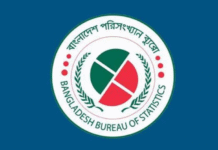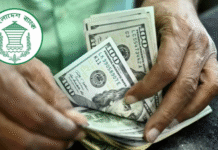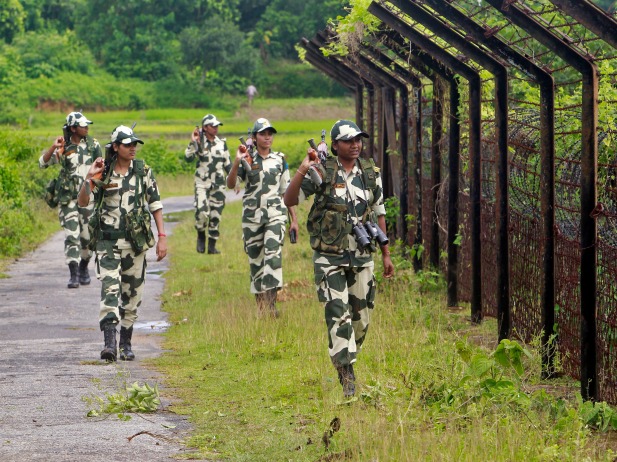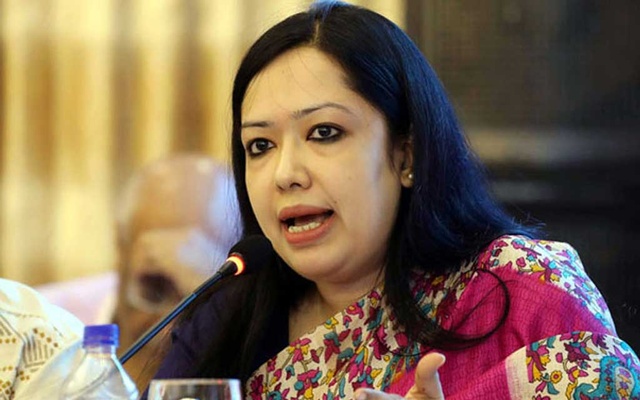TBS

Highlights:
- Proposed US tariff hike threatens Bangladesh’s garment export dominance
- Competitor nations negotiating lower US duties widen tariff gap
- Higher tariffs risk order loss, job cuts, economic disruption
- Buyers already reducing or delaying orders amid tariff uncertainty
- Bangladesh’s infrastructure and scale delay immediate loss of orders
- Long-term survival needs trade deals, cost cuts, productivity boost
Bangladesh’s vital ready-made garment (RMG) industry, which accounts for a staggering 85% of the country’s total exports, faces a critical challenge if US President Donald Trump implements his promised 35% “reciprocal tariff.”
This potential tariff hike, from the current average of 15% on Bangladeshi apparel exports to the US, could push the rate to 50%, severely impacting a sector that thrives on price competitiveness in its largest export market.
The most pressing concern for the industry is the widening tariff gap with competitor nations. While Bangladesh faces a potential steep increase, countries like India, Vietnam, Indonesia, and Pakistan are actively negotiating with the US for lower duties.
If these nations secure preferential tariffs, potentially creating a 15-percentage-point disadvantage for Bangladesh, local manufacturers warn that the country’s price competitiveness would be irrecoverably lost, threatening its standing as a top apparel exporter.
And while Bangladesh stares at this steep cliff, others are quietly building ladders.
India, for instance, is in intense talks with the US. The 26% counter-tariff announced earlier could soon fall to 20% or even lower if New Delhi manages to strike a deal. That would leave Bangladesh facing a 15-percentage-point disadvantage, an unbridgeable gap in a cutthroat, margin-sensitive market.
Vietnam, Indonesia, and Pakistan are also in negotiations. If they too secure lower duties, Bangladesh’s relative cost disadvantage – mainly for cheap labour – could spiral further.
The question now is brutally simple: where will Bangladesh’s garments, jobs and economy go?
The country currently ranks among the top three apparel exporters to the US, competing with Vietnam and China. But with tariffs skewing heavily against it, that ranking is now in jeopardy. Orders may start drifting – not because of quality or compliance – but because Bangladesh has become simply too expensive for buyers.
Syed Mohammad Tanvir, managing director of Pacific Jeans – one of the top five garment exporters in Bangladesh – said the country primarily exports cotton-based apparel to the US market and if Bangladesh ends up facing a higher tariff than India, it will lose its core price advantage.
“For cotton-made products, India and Pakistan are at par with Bangladesh. An additional 10-15% tariff will wipe out our price competitiveness,” Tanvir told The Business Standard yesterday. His concern is significant: around one-fifth of Pacific Jeans’ annual exports – worth about $500 million – go to the US market.
MA Jabbar, managing director of DBL Group – another one among the top five exporters with over $450 million in exports in 2024 – agreed that the pressure is real, although he does not see orders shifting overnight.
“Buyers will start negotiating harder on prices. And factories heavily dependent on the US market will look to Europe, where buyers will sense an opportunity to push prices down. It will create a period of chaos,” Jabbar told TBS.
Unlike some 250 other garment factories, DBL Group is not heavily reliant on the US, with only 6% of its products currently shipped to the world’s largest economy.
“But our US exports were growing fast,” Jabbar added. “Just a few years ago, less than 1% of our shipments went to the US; now it’s 6%. The US was becoming the main market for our value-added products.”
Now, with the threat of a widening tariff gap between Bangladesh and its competitors, Jabbar fears that both the market and its long-term potential could be at risk.
According to industry insiders, some US buyers have already taken a cautious position about placing orders in Bangladesh.
Rakibul Alam Chowdhury, managing director of HKC Apparels Limited, a Chattogram-based factory that exports 90% of its products to the US market, told TBS that they get orders ahead of various festivals, including New Year, Black Friday, and Christmas.
“This time, US buyers are not placing orders as we have received only 20% of the orders compared to the previous years. And, we are exploring alternative markets, but finding new buyers cannot happen overnight,” said Chowdhury.
He said some orders from some Chattogram-based factories have shifted to Vietnam as buyers need deliveries.
SM Khaled, managing director of Snowtex Group – which employs over 20,000 workers and exports around $300 million annually, one-fourth of which goes to US buyers – told TBS that until this month, during the period of the additional 10% tariff, buyers were asking for discounts despite every country’s reciprocal tariffs were the same.
“But if the gap now grows to 15% or more with countries like India and Vietnam, export orders will not come here,” he said.
Possible immediate impacts on Bangladesh
Exporters fear two immediate consequences if Bangladesh ends up facing higher tariffs than competing countries: order shifting and downward price pressure.
SM Khaled, managing director of Snowtex Group, said that negotiations for export orders for the upcoming winter and summer seasons typically take place around this time of year. But this time, orders from US buyers are not coming in as they did in previous years.
“We’re in regular contact with buyers, but they’re not placing orders,” Khaled told TBS. “In fact, they’re scaling back previously confirmed volumes.” He cited a recent example where a US buyer, who had placed an order for 1.8 million pieces of sportswear, later asked to reduce the volume to 1.3 million.
With US demand weakening, Khaled said they have started accepting orders from European and other markets – but at prices about 10% lower than usual.
“Our production lines are designed for 10-hour shifts. Even if we don’t have full capacity orders, we need to run at least 8 hours a day to avoid underutilisation. That’s why we’re accepting lower-priced orders to prevent larger losses,” he explained.
Tanvir of Pacific Jeans echoed similar concerns. He said buyers are likely to reduce order volumes as uncertainty over higher US tariffs looms large.
What India is expecting
In July, when Trump announced a 35% reciprocal tariff on Bangladeshi exports – along with even steeper rates for Vietnam, Cambodia, and Indonesia – India’s textile stocks surged the following day, reflecting optimism within the country’s textile industry.
Sensing an opportunity, India is now eyeing a larger share of the US apparel import market, aiming to capture business from key competitors like Bangladesh, Cambodia, and Indonesia.
According to a report by the State Bank of India, India currently holds a 6% share of US apparel imports. If it can gain an additional 5% market share from its competitors, it could boost the country’s GDP by 0.1%.
The report highlights India’s strength in chemical processing and its comparative advantage in textile manufacturing, which supports regular exports of apparel and garment equipment to the US. However, it also acknowledges that India faces stiff competition in this sector, particularly from Bangladesh, Cambodia, Indonesia, and Vietnam.
According to the US Department of Commerce’s Office of Textiles and Apparel, Bangladesh was the third-largest apparel exporter to the US last year, with shipments worth $7.34 billion. Vietnam ranked second with $14.98 billion, while China led with $16.51 billion. India and Indonesia followed, exporting $4.69 billion and $4.25 billion, respectively – both actively working to expand their market presence.
Why orders won’t disappear overnight
Despite the looming threat of a widening tariff gap, local exporters believe that export orders will not shift out of Bangladesh overnight. They point to several structural advantages that competitors cannot replicate immediately.
Among these are the country’s massive infrastructure built over decades, sustained investments by factory owners, scalable operations, skilled yet affordable labour, and a diverse ecosystem of factories – ranging from small to large, compliant and non-compliant. Added to this is the trust Bangladesh has earned over 40 years as a reliable apparel supplier.
“If the tariff gap reaches 15 percentage points, it will hurt, but export orders won’t vanish overnight,” said MA Jabbar, managing director of DBL Group. “The infrastructure we’ve built took years. Other countries will need time to catch up.”
Tanvir of Pacific Jeans, echoed this, noting, “A factory with 5,000 or 6,000 workers is quite common in Bangladesh. That scale simply doesn’t exist in most of our competing countries – except perhaps China. We have both the capacity and the skilled workforce.”
SM Khaled of Snowtex Group, shared a similar view. While acknowledging that countries like India, Pakistan, Vietnam, Indonesia, and Sri Lanka may gradually expand capacity, he said it won’t happen immediately.
“Bangladesh may not lose all its orders,” he said, “but we do risk losing higher-value, non-basic garments, particularly those with better margins.”
But long-term concerns remain
The RMG sector does not just account for 85% of Bangladesh’s total exports, it also anchors a wide range of other industries. From banking and insurance to transportation, shipping, and logistics, many businesses have grown in tandem with the rise of the garment sector. Industry insiders warn that even a modest decline in exports – say, $1 billion from the nearly $45 billion baseline – could ripple across multiple sectors and affect employment on a broad scale.
As trade uncertainty deepens, suppliers are urgently looking for alternatives. So far, however, the government’s negotiations with the US have not produced any tangible results.
“We might be able to operate for one more season,” said Rakibul Alam Chowdhury, managing director of HKC Apparels. “But beyond that, we may not survive if we don’t find alternative markets. Factory closure would also make it hard to repay bank loans.”
Syed Mohammad Tanvir of Pacific Jeans added that the real challenge may surface in the long run, particularly if Bangladesh’s competitors begin scaling up aggressively.
“The real concern is when countries like India start making big investments to build large-scale factories,” he said. “They’re doing it already. It will take time, but once they reach scale, they’ll be better positioned to capture orders that Bangladesh currently dominates.”
Policy advice
Dr Zaidi Sattar, chairman of the Policy Research Institute, said the dynamics of global trade are shifting rapidly, and Bangladesh must act decisively to remain competitive. This means securing better trade deals than its key rivals – particularly India, Vietnam, Pakistan, and Cambodia.
“I believe the final tariff rate may come down slightly from the proposed 35%,” he said. “But even then, the remaining gap compared to other countries will have to be absorbed – either by suppliers, buyers, or end consumers.”
To cushion the impact, he suggested that the government should reduce production-related costs by lowering electricity, gas, and port charges. At the same time, he urged factory owners to focus on improving productivity to offset higher tariffs and remain price-competitive.
MA Jabbar of DBL Group shared similar thoughts. “Bangladesh needs a clear strategy to sustain its leadership in the global RMG market,” he said. “We need strong policy and investment support, and we must also invest in research and market analysis to adapt to changing global dynamics.”









